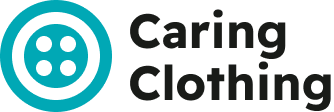The benefits of cloth nappies for children are many. They tend to be more comfortable and better fitted, leading to less irritation on sensitive skin.
Babies have a much easier time with nappy rash when they are wearing cloth diapers because of how breathable the fabric is.
When it's hot outside, babies in breathable clothes will be less likely to get prickly heat and diaper rashes - which usually happen due to sweat that pools against skin before evaporating off again. It may seem like you're changing your baby hourly no matter what kind of diaper he or she wears, but newborns should always be changed after an hour while older babies can last up to 4 hours without needing another change so long as their pee isn't concentrated near one area for too long.
Cleaning reusable nappies is also easier than with traditional disposables because they can simply be tossed into a wash load when soiled or aired out between each change in order to prevent odours from forming.
Conni Reusable Cloth nappies are super absorbent, comfortable, stylish and environmentally friendly, what more could you want!
This nappy is perfect for tiny bottoms and can be used from day dot. With the absorbency layers stitched in, all you have to do is pop it on your baby and off you go.
Conni Reusable Cloth Nappies are lined with a fast-absorbing charcoal bamboo fleece to draw moisture away from your baby's skin, you can rest assured your baby won’t be sitting around feeling wet.
How to use reusable nappies:
Step 1: Flush away solids
Tip all solids into the toilet. If you’re using a bamboo liner, tip the solids and discard the liner in the bin.
Step 2: Rinse under the tap
Rinsing and a light scrub helps to remove any excess solids, dilutes acidic urine, minimises staining, and cuts down on the smells coming from your laundry.
Step 3: Pre Soak
You can use an oxygenated bleach (not straight bleach, use napisan) and water to soak your nappies for a few hours. You could use any bucket but the Strucket would be handy as you can drain and leave until your next washing cycle. The sooner the better but if you've used something like napisan, the oxygen in the bleach will push out the bacteria so they do not need to be put into the wash straight away. Avoid delaying washing longer than 12 hours.
Step 4: Normal wash cycle (no more than 40°)
Nappies and inserts should be put through a normal wash cycle with the amount of detergent recommended on the packet. Don’t use any bleach or fabric softener or this will impact the absorbance.
Step 5: Hang in the sun to dry
Sunshine will help with stains, smells, and any bacteria. If you need to use a dryer, only use it for the inserts. The nappies and nappy shells will last longest when line dried. If a dryer is required occasionally, it must be on low heat (no more than 40°) to ensure the longevity of your nappies.
BENEFITS OF REUSABLE NAPPIES
- Absorbent & waterproof
- Washable, reusable & sustainable innovation in toilet training
- Soft breathable fabric, suitable for sensitive skin
- A possible solution for kids incontinence aid
- Washing your nappies is no harder than washing your baby's clothes
CONNI REUSABLE CLOTH NAPPIES - PRODUCT DETAILS:
- Body: 70% Bamboo, 30% Cotton
- Barrier: 100% Polyurethane
- Soaker: 100% Microfiber
- Inner: 100% Charcoal Bamboo microfiber
- Available in a range of colours
- Sizes: Newborn - 4 months, 4 months to 2.5 years. Please check the sizing guide for more information.
When you are ready for toilet training with your little one, see the wide range of toilet training products here.

